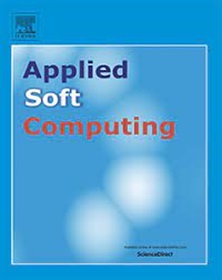通过利用局部和全局相似性来减轻图少射学习中的过度压缩
IF 6.6
1区 计算机科学
Q1 COMPUTER SCIENCE, ARTIFICIAL INTELLIGENCE
引用次数: 0
摘要
有监督的机器学习模型,特别是神经网络,在数据不足的情况下往往无法提供令人满意的结果。在处理固有的复杂数据(如图形数据)时,这变得更加具有挑战性。本文解决了在图数据背景下使用有限数量样本进行学习的问题,即n-way k-shot学习。我们的研究通过利用传递关系将相似度的概念从相邻节点扩展到整个图。通过使用边和强传递关系,我们利用二部图神经网络,该网络利用局部邻域和遥远但相似的节点来生成节点嵌入。这种方法在节点分类等任务中已被证明是有效的。我们提出的模型减轻过度压缩问题的能力增强了其泛化性,从而产生任务不变模型。在各种图形数据集上的实验结果表明,我们的模型产生的嵌入不是特定于任务的。因此,我们的模型在少量学习场景中优于其他模型,其中每个不同的下游任务只有有限数量的标记节点可用。本文章由计算机程序翻译,如有差异,请以英文原文为准。
Mitigating over-squashing in graph few-shot learning by leveraging local and global similarities
Supervised machine learning models, particularly neural networks, often fail to deliver satisfactory results in scenarios with insufficient data. This becomes even more challenging when dealing with inherently complex data, such as graph data. This paper addresses the issue of learning with a limited number of samples, known as -way -shot learning, within the context of graph data. Our research extends the concept of similarity from neighboring nodes to the entire graph by leveraging transitivity relations. By employing edges and strong transitivity relations, we utilize a bipartite graph neural network that capitalizes on both local neighborhoods and distant, yet similar, nodes to generate node embeddings. This approach has demonstrated effectiveness in tasks such as node classification. Our proposed model’s ability to mitigate the over-squashing problem enhances its generalizability, resulting in a task-invariant model. Experimental results on various graph datasets show that the embeddings produced by our model are not task-specific. Consequently, our model outperforms other models in few-shot learning scenarios, where only a limited number of labeled nodes are available for each distinct downstream task.
求助全文
通过发布文献求助,成功后即可免费获取论文全文。
去求助
来源期刊

Applied Soft Computing
工程技术-计算机:跨学科应用
CiteScore
15.80
自引率
6.90%
发文量
874
审稿时长
10.9 months
期刊介绍:
Applied Soft Computing is an international journal promoting an integrated view of soft computing to solve real life problems.The focus is to publish the highest quality research in application and convergence of the areas of Fuzzy Logic, Neural Networks, Evolutionary Computing, Rough Sets and other similar techniques to address real world complexities.
Applied Soft Computing is a rolling publication: articles are published as soon as the editor-in-chief has accepted them. Therefore, the web site will continuously be updated with new articles and the publication time will be short.
 求助内容:
求助内容: 应助结果提醒方式:
应助结果提醒方式:


